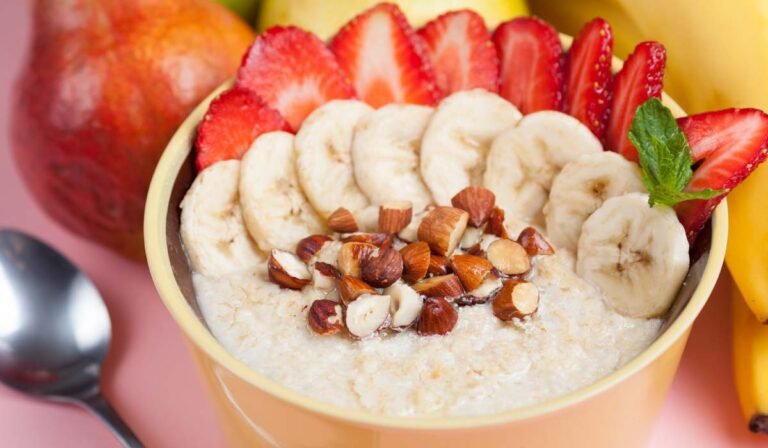Dental implants have revolutionised modern dentistry, and among the most life-changing innovations is the All-on-4 treatment concept. Designed to support a full arch of teeth using just four implants, this solution offers stability, durability, and aesthetics that rival natural teeth. But one of the most common questions patients ask after receiving All-on-4 implants is: “What can I eat?”
The short answer is—yes, you’ll be able to enjoy your favourite foods again. But the longer, more important answer involves understanding how to eat wisely during each stage of recovery. Your diet plays a crucial role in healing, comfort, and the long-term success of your implants. Here’s a guide to what you can eat with confidence, along with tips for faster healing and better results.
Why Diet Matters After All-on-4
Unlike traditional dentures that can slip or shift, All-on-4 implants are anchored directly into your jawbone, offering exceptional stability. However, the healing process following surgery—known as osseointegration—requires time and care. During this stage, your body fuses the implants with the surrounding bone. The right diet can support tissue repair, reduce inflammation, and prevent complications that could slow healing or damage the implants.
Diet plays a vital role in the healing process after receiving All-on-4 implants. During the initial recovery phase, your gums and jawbone are adjusting to the newly placed All-on-4 implants, and proper nutrition supports tissue repair, reduces inflammation, and helps prevent infection. Eating the right foods can also minimise pressure on the surgical sites, which is crucial for the long-term success and stability of your All-on-4 implants. Making smart dietary choices ensures a smoother healing journey and lays the foundation for lasting results.
Phase 1: Soft Foods for the First Few Weeks
In the first two weeks after your All-on-4 procedure, your mouth is still adjusting. This period is critical for healing, and your diet should consist exclusively of soft, easy-to-chew foods.
What to Eat:
- Mashed potatoes, pumpkin, or avocado
- Scrambled eggs or soft-boiled eggs
- Yogurt and cottage cheese
- Smoothies and protein shakes (avoid seeds or hard fruit pieces)
- Soups (lukewarm, not hot) and broths
- Applesauce or banana mash
- Soft oatmeal or rice porridge
Avoid any crunchy, spicy, or hard foods that could irritate the gums or disrupt the healing implants. Drinking through a straw is also discouraged as suction can interfere with clot formation.
Tips for faster healing and better results during this stage include staying hydrated, avoiding alcohol and smoking, and keeping up with any prescribed medications or mouth rinses from your dentist.
Phase 2: Semi-Soft Foods as Healing Progresses
By week three or four, you’ll likely be cleared to introduce semi-soft foods into your diet. While you’ll still need to avoid crunchy or chewy options, you can start enjoying a broader range of meals.
What to Eat:
- Soft pasta or noodles
- Tender fish (like salmon or tilapia)
- Well-cooked vegetables (steamed or boiled)
- Ground meats (turkey, beef, or chicken)
- Soft tofu or lentils
- Pancakes or soft bread (without crusts or seeds)
Continue chewing on both sides of your mouth to avoid putting too much pressure on one side. Maintain good oral hygiene, but do so gently to avoid disturbing the healing sites.
Phase 3: Returning to a Normal Diet (With Confidence)
After two to three months—and a final assessment from your dentist—you may be given the go-ahead to return to a more normal diet. The strength of All-on-4 implants allows you to eat many of the foods you might have avoided for years due to missing or unstable teeth.
Foods You Can Enjoy Again:
- Crisp apples (cut into slices)
- Lean grilled meats
- Toasted sandwiches (avoid extremely hard crusts)
- Raw vegetables (carrot sticks, celery)
- Nuts and seeds (in moderation)
- Steak (cut into small, manageable bites)
Even at this stage, moderation is key. You don’t want to rush into eating very tough, chewy, or sticky foods right away. Chewing gum, taffy, and extremely crunchy snacks like popcorn kernels should still be limited or avoided entirely.
Nutritional Tips for Faster Healing and Better Results
Your body heals best when it receives the proper nutrients. In addition to following your dentist’s advice, here are essential tips for faster healing and better results:
- Prioritise Protein: Essential for tissue repair, proteins from fish, eggs, legumes, and lean meats help your gums and jawbone recover faster.
- Stay Hydrated: Drink plenty of water to help reduce swelling, flush out toxins, and keep your mouth moist for better healing.
- Add Anti-Inflammatory Foods: Incorporate turmeric, ginger, berries, and leafy greens to reduce inflammation and discomfort.
- Avoid Sugar and Acidic Drinks: Minimise soft drinks, sweets, and acidic juices that could irritate the gums and weaken the oral environment.
- Take Supplements if advised: Calcium and vitamin D support bone regeneration, while vitamin C aids in gum healing.
Eat Well, Smile Boldly
Living with All-on-4 implants means more than just restoring your smile—it means reclaiming the freedom to enjoy your meals without discomfort or fear. While the first few months require careful dietary choices, the long-term reward is a renewed ability to eat confidently, socially, and healthily.
By understanding what to eat and following your dentist’s tips for faster healing and better results, you’ll maximise your implant’s success and enjoy a healthier, happier life—with every bite.
